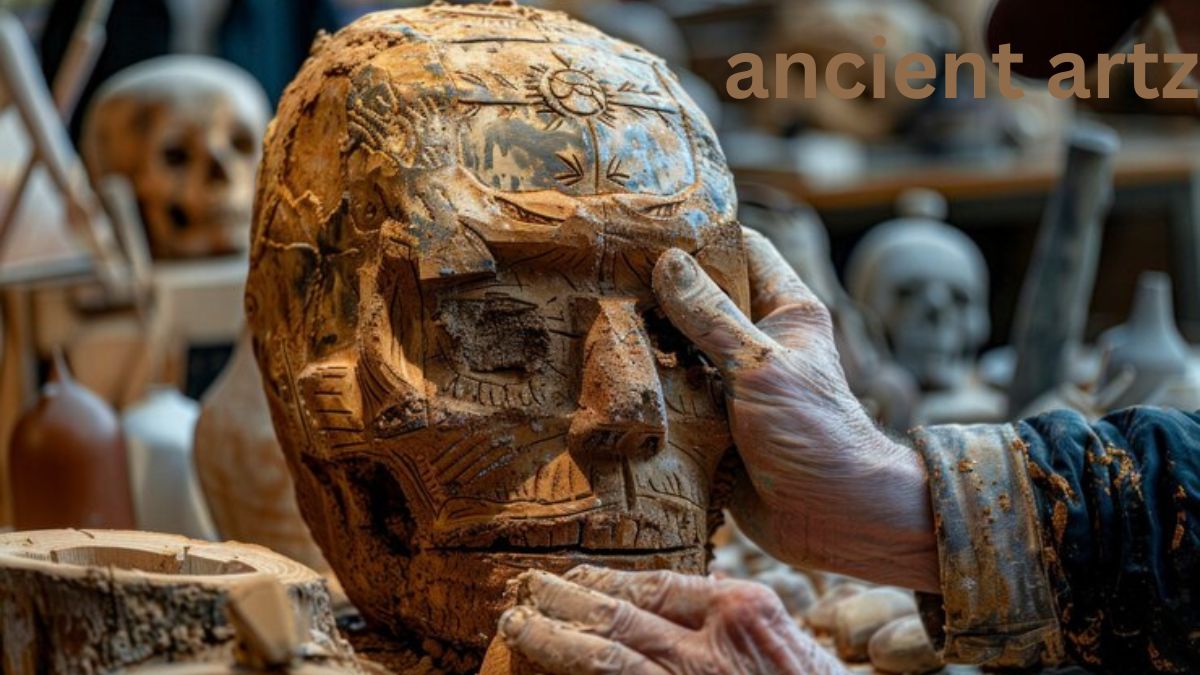Ancient art is more than just decorative objects and sculptures from bygone eras; it’s a window into the lives, beliefs, and aspirations of early civilizations. These works, often created with limited tools and materials, remain some of the most revered artistic achievements in human history. In this article, we’ll delve into the world of Ancient Artz, exploring the masterpieces of various cultures and their lasting impact on modern society. Whether you’re an art lover or a history enthusiast, the journey through ancient art promises to be an enlightening one.
What is Ancient Artz?
Ancient art refers to the various forms of creative expression produced by early civilizations before the fall of the Roman Empire in AD 476. This art includes everything from cave paintings and pottery to grand architectural structures like pyramids and temples.
The art of ancient cultures spans a vast period and includes works from the Egyptians, Greeks, Romans, Mesopotamians, and many other civilizations. Today, ancient art is studied not only for its beauty but for the insights it provides into early human cultures.
The Importance of Ancient Artz
Ancient art plays a crucial role in understanding human history. It serves as a visual record of the past, offering clues about how people lived, what they believed, and what they valued.
Beyond its historical significance, ancient art has left a lasting impact on modern art and architecture. Many contemporary artists and designers draw inspiration from the techniques, styles, and themes of ancient artworks, keeping these ancient forms relevant today.
A Reflection of Society and Beliefs
One of the most compelling aspects of ancient art is its ability to reflect the values and beliefs of the society that created it. In many cultures, art was a means of communicating with the gods, celebrating rulers, or depicting important religious stories. Ancient artworks often featured gods, goddesses, and spiritual symbols that were central to the culture’s beliefs.
For example, Egyptian art is known for its detailed depictions of the afterlife, with images of gods like Osiris and Anubis frequently appearing in tombs and temples. These depictions weren’t just artistic; they represented the Egyptians’ deep belief in life after death and the rituals necessary for a safe journey to the afterlife.
Key Civilizations and Their Art Forms
While every ancient civilization had its own unique art forms, some are particularly renowned for their contributions to the history of art. Let’s take a look at some of the most influential civilizations and their artistic legacies.
- Key Techniques: Use of scale to signify importance, detailed stone carving, vibrant frescoes.
- Famous Works: The Great Sphinx of Giza, the bust of Nefertiti, and Tutankhamun’s golden death mask.
Greek and Roman Art: Celebrating the Human Form
In contrast to Egyptian art, which was highly symbolic, Greek and Roman art sought to depict the human body with realism and anatomical accuracy. Greek sculptures, in particular, celebrated the human form in its most idealized state, striving for perfection in every detail. Roman art borrowed heavily from the Greeks but focused more on realism, including portraits of historical figures with distinctive features.
- Key Techniques: Marble and bronze sculpture, fresco painting, and mosaic work.
- Famous Works: The Venus de Milo, the Parthenon sculptures, and the Roman Colosseum.
Mesopotamian Art: The Cradle of Civilization
Mesopotamia, often referred to as the cradle of civilization, produced art that was both functional and spiritual. Ziggurats (massive temple structures) and intricately carved reliefs depicting gods, kings, and mythological creatures are some of the most iconic works from this region.
- Key Techniques: Relief carving, monumental architecture, cylinder seals.
- Famous Works: The Ishtar Gate, Stele of Hammurabi, and the Ziggurat of Ur.
The Materials and Techniques of Ancient Art
Ancient artists worked with the materials available to them, often creating impressive works despite limited resources. The materials used ranged from stone, clay, and wood to precious metals and ivory.
The Legacy of Ancient Artz in Modern Times
ancient artz has left an indelible mark on the modern world. For instance, neoclassical architecture draws heavily on the designs of ancient Greece and Rome, with their columns, pediments, and symmetrical layouts appearing in government buildings, museums, and monuments worldwide.
Archaeological digs continue to uncover new pieces, further enriching our understanding of ancient cultures.
Why Study Ancient Artz?
Studying ancient artz provides valuable insights into human history. It helps us understand the social, political, and religious beliefs of early civilizations and how these beliefs influenced the development of human culture. Moreover, ancient art inspires modern creators, showing that the beauty and innovation of early civilizations continue to resonate today.
Conclusion
Ancient art is a rich tapestry that offers a glimpse into the lives and beliefs of early human civilizations.
FAQs
- What is the significance of ancient artz?
- Ancient art provides insight into the culture, beliefs, and daily life of early civilizations.
- Which civilizations are most known for their ancient art?
- Egypt, Greece, Rome, and Mesopotamia are among the most notable civilizations for their artistic achievements.
- How is ancient art preserved today?
- Ancient art is preserved through careful restoration, archaeological efforts, and protective measures in museums.
- What materials did ancient artists use?
- Common materials included stone, clay, metal, and natural pigments for painting.
- Why does ancient artz still influence modern art?
- Ancient art’s emphasis on beauty, symbolism, and realism continues to inspire contemporary artists and architects.
